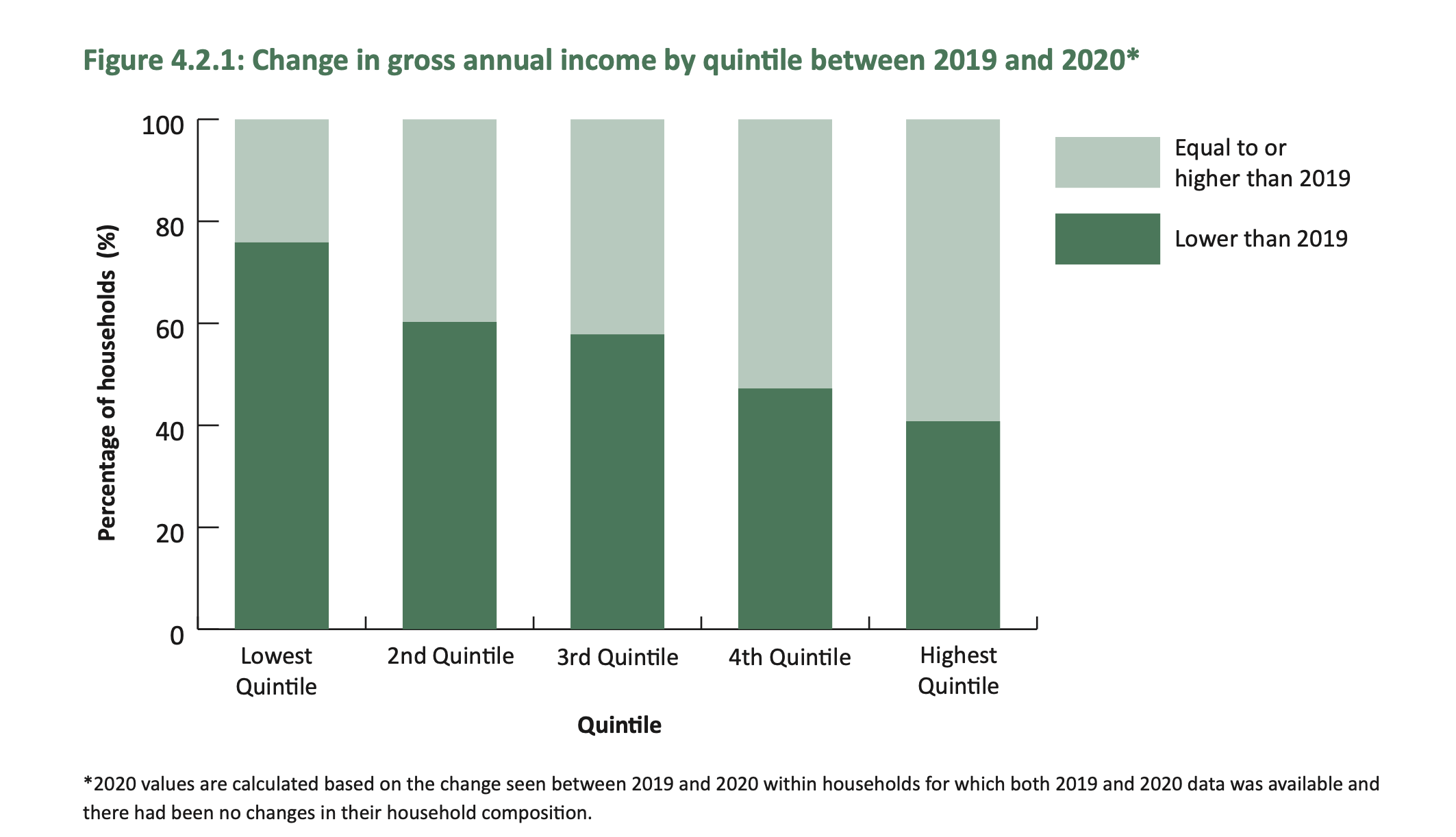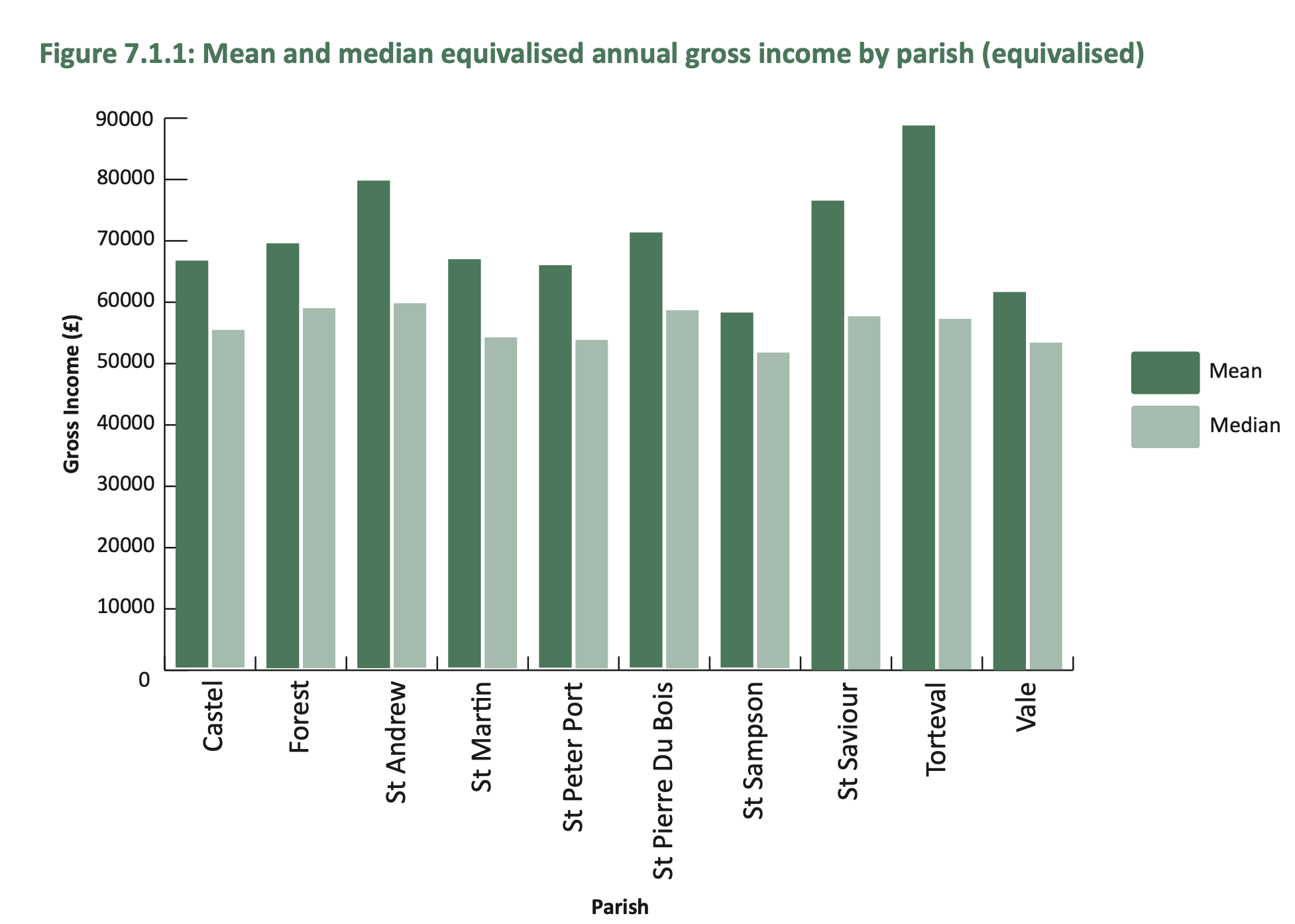


A report examining household income and expenditure has revealed that around 40% of local households earn at least £60,000 per year, placing them well above the national average of some £36,000 as calculated for 2021.
The Guernsey Household Income Report, published by the States last month, has comparatively examined the income levels for Bailiwick homes using data from the Rolling Electronic census. The data set included 8,009 ‘consistent’ households, meaning that the same individuals occupied the property over the course of a year.
The report has illuminated that 40.7% of households surveyed receive a total income of more than £60,000. However, this is against a backdrop of lowering income for all groups and household compositions in the year 2020.
But the number of both households and people seen to be living with wages under 60% of the island median average has fallen since 2018, with 4% of these households now earning more.
The report said: “The incomes of low-income households (particularly those living in affordable housing) increased more than the incomes of middle and high income households between 2018 and 2019.”
And a majority – 54% - of those still living under that threshold were found to be households inhabited by just one person.

Pictured: The difference in income loss over the past few years between low-income and high-income households is wide.
The report said: “76% of households in the lowest income quintile (the lowest 20% of households when ordered by income) showed a decrease in gross income between 2019 and 2020. In contrast, 41% of households in the highest income quintile recorded a decrease in gross income during the same time period.”
There has been a clear overall reduction in average annual gross household income from 2019 to 2020, however the number of homes receiving the lowest wages was hit considerably harder than those receiving the most.
Those in the lowest quintile are the most likely to be in receipt of direct benefits and/or old age pensions, with up to 54% derived from these sources. This decreases substantially as each earnings bracket is considered.

Pictured: The average incomes for schools based on catchment (where available), up to the end of 2019.
Amherst Primary School’s catchment area was found to have the most households earning lower than the average, showing a 13% divergence from the Bailiwick average.
At the other end of the scale, La Houguette Primary School’s catchment was found to have an average household income 32% higher than the island average of associated properties.
These findings for both schools were also highlighted by looking at the quintile distribution within the corresponding catchment areas. Unsurprisingly, Amherst comprised the highest number of low-income homes, whilst La Houguette had the greatest number of high-income homes.
For secondary schools, St Sampsons High was identified as holding a catchment area comprised of households earning 10% less than the national average with children.
“Les Beaucamps catchment area had the highest equivalised mean and median income at £74,113 and £59,177,” said the report.

Pictured: The socio-economic make-up of the island's schools is clear to see.
The island’s private schools, which use no catchment system, were seen to have a much greater proportion of high-income households.
The report stated: “The proportion of households within the lowest income quintile was relatively low, varying between 0% (The Ladies' College Reception to Year 6) and 29% (Blanchelande Reception to Year 6).
“Within the highest income quintile, Blanchelande Year 7+ had the lowest proportion of households at 28%, whilst Elizabeth College Reception to Year 6 had the highest proportion of households (70%).”

Pictured: Median average, rather than mean average, is seen as a more appropriate way to consider income differences based on parish.
Using parish-centric measures, Torteval was found to have the highest mean income. Although, median income was noted as being a better indicator here due to a select few households receiving very high incomes, therefore skewing the averages.
The report revealed: “St Andrew recorded the highest median income, at £59,477, whilst St Sampson had the lowest, £51,502.”
The States said that whilst there are limitations within the report, actions were taken to ensure greater balance.
“It should be noted that using consistent households and those with complete information only, means that certain types of households are less likely to be represented within the analysis.
“This has been corrected for via weighting to make the analysis as representative as possible of the whole population (by household composition, previous income and tenure). However, it also means the figures are not strictly comparable with those previously published.”
Comments
Comments on this story express the views of the commentator only, not Bailiwick Publishing. We are unable to guarantee the accuracy of any of those comments.